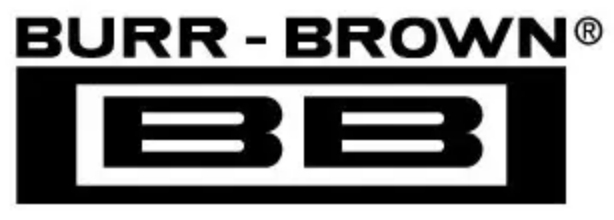The program automatically places lower Q stages ahead of
higher Q stages to prevent op amp output saturation due to
gain peaking. Even so, peaking may limit input voltage to
less than
±10V
(V
S
=
±15V).
The maximum input voltage
for each filter design is shown on the
filter block diagram.
If the UAF42 is to be operated on reduced supplies, the
maximum input voltage must be derated commensurately.
To use the filter with higher input voltages, you can add an
input attenuator.
The program designs the simplest filter that provides the
desired AC transfer function with a pass-band gain of
1.0V/V. In some cases the program cannot make a unity-
gain filter and the pass-band gain will be less than 1.0V/V.
In any case, overall filter gain is shown on the
filter block
diagram.
If you want a different gain, you can add an
additional stage for gain or attenuation as required.
To build the filter, print-out the block diagram and compo-
nent values. Consider one subcircuit at a time. Match the
subcircuit type referenced on the component print-out to its
corresponding circuit diagram—see the Filter Subcircuits
section of this bulletin.
The
UAF42 Filter Component Values
print-out has places to
display every possible external component needed for any
subcircuit. Not all of these components will be required for
any specific filter design. When no value is shown for a
component, omit the component. For example, the detailed
schematic diagrams for complex pole-pair subcircuits show
external capacitors in parallel with the 1000pF capacitors in
the UAF42. No external capacitors are required for filters
above approximately 10Hz.
After the subcircuits have been implemented, connect them
in series in the order shown on the
filter block diagram.
FILTER SUBCIRCUITS
Filter designs consist of cascaded complex pole-pair and
real-pole subcircuits. Complex pole pair subcircuits are
based on the UAF42 state-variable filter topology. Six varia-
tions of this circuit can be used, PP1 through PP6. Real pole
sections can be implemented with the auxiliary op amp in
the UAF42. High-pass (HP) and low-pass (LP) real-pole
sections can be used. The subcircuits are referenced with a
two or three letter abbreviation on the
UAF42 Filter Compo-
nent Values
and
Filter Block Diagram
program outputs.
Descriptions of each subcircuit follow:
POLE-PAIR (PP) SUBCIRCUITS
In general, all complex pole-pair subcircuits use the UAF42
in the state-variable configuration. The two filter parameters
that must be set for the pole-pair are the filter Q and the
natural frequency, f
O
. External resistors are used to set these
parameters. Two resistors, R
F1
and R
F2
, must be used to set
the pole-pair f
O
. A third external resistor, R
Q
, is usually
needed to set Q.
At low frequencies, the value required for the frequency-
setting resistors can be excessive. Resistor values above
about 5MΩ can react with parasitic capacitance causing
poor filter performance. When f
O
is below 10Hz, external
capacitors must be added to keep the value of R
F1
and R
F2
below 5MΩ . When f
O
is in the range of about 10Hz to 32Hz,
An external 5.49kΩ resistor, R
2A
, is added in parallel with
the internal resistor, R
2
, to reduce R
F1
and R
F2
by
√10
and
eliminate the need for external capacitors. At the other
extreme, when f
O
is above 10kHz, R
2A
, is added in parallel
with R
2
to improve stability.
External filter gain-set resistors, R
G
, are always required
when using an inverting pole-pair configuration or when
using a noninverting configuration with Q < 0.57.
PP1
(Noninverting pole-pair subcircuit using internal gain-
set resistor, R
3
)—See Figure 7. In the automatic topology
selection mode, this configuration is used for all band-pass
filter responses. This configuration allows the combination
of unity pass-band gain and high Q (up to 400). Since no
external gain-set resistor is required, external parts count is
minimized.
PP2
(Noninverting pole-pair subcircuit using an external
gain-set resistor, R
G
)—See Figure 8. This configuration is
used when the pole-pair Q is less than 0.57.
PP3
(Inverting pole-pair subcircuit)—See Figure 9A. In the
automatic topology selection mode, this configuration is
used for the all-pole low-pass and high-pass filter responses.
This configuration requires an external gain-set resistor, R
G
.
With R
G
= 50kΩ, low-pass and high-pass gain are unity.
PP4
(Noninverting pole-pair/zero subcircuit)—See Figure
10. In addition to a complex pole-pair, this configuration
produces a jω-axis zero (response null) by summing the low-
pass and high-pass outputs using the auxiliary op amp, A
4
,
in the UAF42. In the automatic topology selection mode,
this configuration is used for all band-reject (notch) filter
responses and Inverse Chebyshev filter types when
Q > 0.57. This subcircuit option keeps external parts count
low by using the internal gain-set resistor, R
3
.
PP5
(Noninverting pole-pair/zero subcircuit)—See Figure
11. In addition to a complex pole-pair, this configuration
produces a jω-axis zero (response null) by summing the low-
pass and high-pass outputs using the auxiliary op amp, A
4
,
in the UAF42. In the automatic topology selection mode,
this configuration is used for all band-reject (notch) filter
responses and Inverse Chebyshev filter types when
Q < 0.57. This subcircuit option requires an external gain-set
resistor, R
G
.
PP6
(Inverting pole-pair/zero subcircuit)—See Figure 12. In
addition to a complex pole-pair, this configuration produces
a jω-axis zero (response null) by summing the low-pass and
high-pass outputs using the auxiliary op amp, A
4
, in the
UAF42. This subcircuit is only used when you override the
automatic topology selection algorithm and specify the in-
verting pole-pair topology. Then it is used for all band-reject
(notch) filter responses and Inverse Chebyshev filter types.
4

 BURR-BROWN [ BURR-BROWN CORPORATION ]
BURR-BROWN [ BURR-BROWN CORPORATION ]